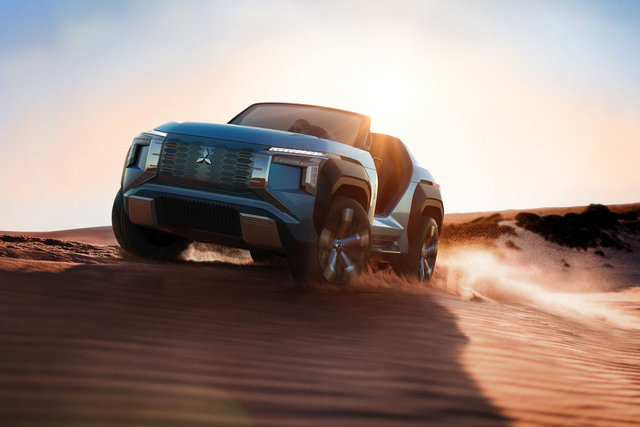Three Diamonds: The Story and Meaning Behind the Mitsubishi Logo
Every time you see a Mitsubishi vehicle on the road, you're witnessing more than just automotive design—you're looking at...
Action Mitsubishi

When it comes to electrification, Mitsubishi is best known for being the first company to offer a plug-in hybrid SUV in the compact SUV category.
That's a feat in itself, but to understand how the company got there, and where it's going, a look back is essential to see the path taken, and the philosophy behind the brand's innovative thinkers.
The commitment
Mitsubishi is a key player in the field of electrification. That much is clear. What's fascinating is to discover that its commitment to greener mobility goes back several decades. Since its first explorations in the field of electric vehicles, the brand has never ceased to innovate, developing advanced technologies and electric models that have shaped the landscape of the ecological automobile.
Mitsubishi's history of electrification began long before the era of 100% electric vehicles. As early as the 1970s, Mitsubishi embarked on research into low-emission vehicles, seeking to anticipate future needs in terms of sustainable mobility. The company even designed an experimental model based on its famous Minicab, a popular delivery vehicle in several Asian markets. The model did not reach production (the company offered its first all-electric model in 2011), but the foundations had been laid.
The 2000s
In the 2000s, the brand took a major step forward by introducing prototype hybrid and electric vehicles. However, it was with the launch of the Mitsubishi i-MiEV in 2009 that the company established itself as a pioneer in production electric vehicles.
The Mitsubishi i-MiEV (Mitsubishi innovative Electric Vehicle) was one of the first electric vehicles available to the general public. This model quickly attracted attention thanks to its compact size, energy efficiency and lithium-ion battery technology, providing a reasonable range for urban use. Although the i-MiEV was primarily designed for urban use, it ushered in a new era of electrification and established Mitsubishi as a major player in the world of electric vehicles.
Hybridity
While the i-MiEV offered a glimpse of the electric future, Mitsubishi expanded its range of electrified models by introducing what has become the flagship product in the plug-in category, the Mitsubishi Outlander PHEV. The latter was launched in 2013 elsewhere in the world, although it reached us in 2017, as a 2018 model.
The Outlander PHEV was the brand's first plug-in hybrid SUV, combining a gasoline engine with two electric motors to offer all-electric range and hybrid driving for longer journeys. This model quickly gained in popularity, particularly in Europe, thanks to its low emissions and fuel economy, while continuing to offer the versatility of a family-friendly SUV.
In 2023, we were treated to the second generation of the model, an edition that pushes the envelope even further with 61 km of range.
Electrification also benefits the Outlander PHEV's S-AWC (Super-All Wheel Control) all-wheel drive system, which is more responsive thanks to the electrical input.
Towards total electrification
Today, Mitsubishi continues to invest in the electrification of its models with a clear vision: to achieve a zero-emission future. The brand has announced a number of initiatives to accelerate the transition to fully electric vehicles, including the development of new, more efficient platforms and batteries.
The Momentum 2030 plan, announced earlier this year, will bring us more interesting models between now and the end of the decade, models that will once again demonstrate the brand's innovative character and vision for the future.
Mitsubishi's history of electrification is an example of leadership in sustainable innovation. From the first concept to the Outlander PHEV and the small i-MiEV, Mitsubishi has anticipated and met the needs of tomorrow's mobility.
The future looks very interesting indeed.
Every time you see a Mitsubishi vehicle on the road, you're witnessing more than just automotive design—you're looking at...
When you see the iconic three-diamond emblem on a Mitsubishi vehicle today, you're looking at a symbol that represents...
Starting post-secondary education or purchasing a first vehicle represents a major milestone for Quebec families. The 2025...